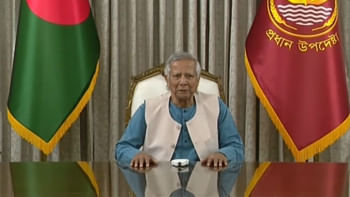Hans Christian Andersen: The Story of His Life and Works

HANS Christian Andersen, an immortal author hailing from Denmark, was the ugly duckling of his own story—"so gawky and peculiar". In the first part of this compassionate bookHans Christian Andersen: The Story of His Life and Works, the author, Professor Dr. Elias Bredsdorff, traces the story of Andersen's extraordinary life and shows how often his tales grew out of his own experience.
Andersen's career was a weird one. He longed more than anything to be accepted by the ruling classes and found it was only by becoming a famous writer that he could break through social barriers. From the humblest background he rose to win universal fame and to find himself courted by the rulers and aristocrats of several European countries. By the end of his life, though often sad, and even lonely, he had virtually become an institution of Danish literature.
Everywhere he went he sought out the leading writers and artists: Victor Hugo, Henrik Ibsen, Elizabeth Barrett Browning, Charles Dickens, Jenny Lind, all find a vivid place in his letters, diaries and memoirs. In London he was a literary idol with hostesses vying for his company.
However, not everyone liked him, and to his great distress as any form of criticism could upset him for days, he was often maliciously caricatured as a snob and a fawner. These attacks were really provoked by his oddly childish behavior, his naïve efforts to please people around him. He was not an ordinary man—as was shown by some absurd paper clips which aimed at poking fun at him.
The second part of the book, a study of the tales by Hans Christian Andersen, will be a revelation to most people for, as the author says, Andersen has long been relegated to the nursery and few adults realize the full extent of his wit, charm and fabulous dexterity as a storyteller. According toProfessor Dr. Elias Bredsdorff, the blame lies at the feet of the Victorian lady translators whose versions have unfortunately become sacrosanct. These women bowdlerized, mistranslated and sentimentalized most of the original works of Hans Christian Andersen. In fact they committed every kind of sin against the original appeal of Andersen's stories while converting his works into English from Danish language. The author, Professor Dr. Elias Bredsdorff, lets Andersen speak for himself and shows where his universal artistry as an author lies: the king who turned a somersault for joy saying "You never saw such a beauty" and the tin soldier's parade and the Snow Queen's promise to Kay of "the whole world and a pair of new skates."
This book includes some sketches by Hans Christian Andersen and surprisingly, there is an illustration of some dancing dervishes which reminds of a philosophical trajectory marked by the mystic thoughts of Jalal Uddin Rumi, the most famous Persian scholar of all times. Some self-portraits reflect the gladness and melancholy, blitheness and despair that flowed simultaneously through Andersen's lifespan. Portrayal of a funeral procession is also found in the book which hints at Andersen's musings over death during the last few years of his life.
It would be a myopic assessment to comment that the fables and myths found in stories by Hans Christian Andersen are all for kids. The people he characterized in his books, the birds and animals he personified in his fables have the tested and proven power to mesmerize readers of all ages. Themes of his literary creations exceed all frontiers of time and territories. This is the principal reason behind his eminence as a widely perused writer across the world and his global acceptability which have transformed his books into classics. The Steadfast Tin Soldier, The Wild Swans, The Little Mermaid, The Emperor's New Clothes, The Princess and the Pea are some of his most cited stories. He wrote a number of travelogues too like Shadow Pictures of a Journey to the Harz, Swiss Saxony, A Visit to Portugal etc.Soren Kierkegaard, a prominent Danish philosopher wrote a review of 70 pages on his novel Only a Fiddler.2nd April, Andersen's date of birth, is celebrated globally as International Children's Books Day to pay tribute to this illuminated wordsmith. Robert Lytton, a frontline poet and statesman of 19th century England named Andersen "half child, half God" for his plain-hearted but benevolent nature.
Elias Bredsdorff says he first realized Hans Christian Andersen was a man and not just the title of a wonderful book of fairy tales when his grandmother told him that she had once danced with Andersen—then an old man—and that he had trodden on her toes with his ridiculously long feet.
Professor Dr. Elias Bredsdorff taught Scandinavian Studies in Cambridge University, UK for a long time. An eye-catching number of publications on Hans Christian Andersen and Scandinavian literature enlighten his profile. He collaborated with R.P. Keigwin on his translation of the stories by Andersen and has written and edited several books on the medieval and modern literature of Denmark. In 1973 he was awarded the Hans Christian Andersen Prize by the Danish Government. This book Hans Christian Andersen: The Story of His Life and Works, the fullest biography in any language, is the culmination of a lifelong study of Andersen, the "unsurpassed master" of fairy tales.
The reviewer is Senior Lecturer, Department of English, Metropolitan University, Sylhet.


 For all latest news, follow The Daily Star's Google News channel.
For all latest news, follow The Daily Star's Google News channel. 



Comments